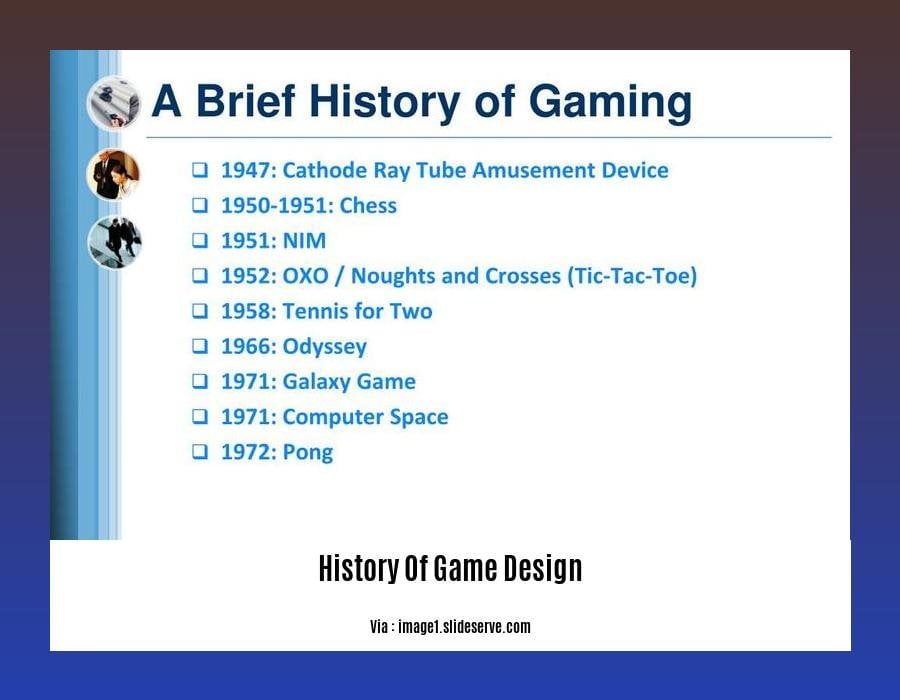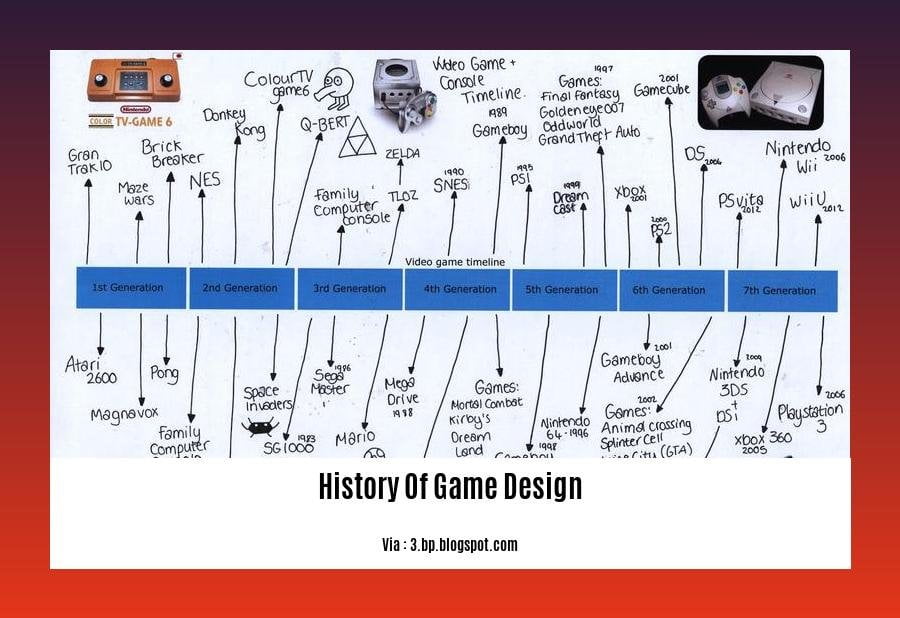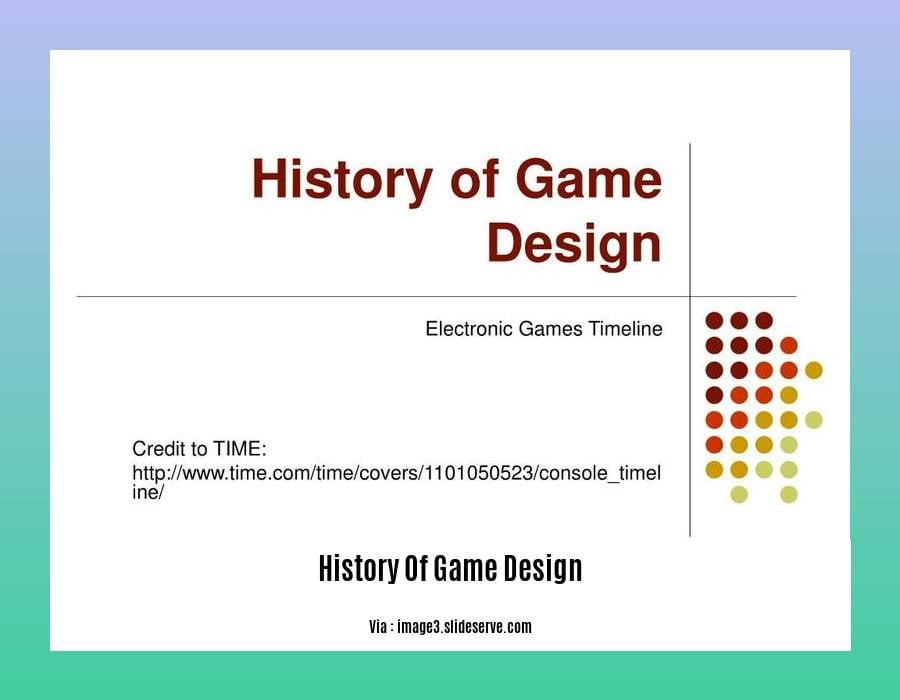Embark on a captivating journey through the annals of game design as we explore the groundbreaking milestones that have transformed the video game industry from its humble beginnings to the immersive experiences we enjoy today. From the pixelated simplicity of Pong to the breathtaking realism of modern masterpieces, this historical odyssey will delve into the technological advancements, design philosophies, and cultural impact that have shaped the past, present, and future of interactive entertainment.
Key Takeaways:
- Game design involves creating the rules, systems, and experiences of a game.
- Games can serve various purposes such as entertainment, education, and experimentation.
- Gamification applies game design principles to non-game interactions.
- Major gameplay elements include player actions and experiences.
- Different game types present unique design challenges.
- Board games have a long history of evolving through a communal process.
- Commercial publishing influences the design and adaptation of traditional games.
- Game design is an iterative process of testing and refinement.
History of Game Design


Game design has a rich history that predates the digital era. From board games to video games, the evolution of game mechanics showcases human creativity and technological advancements.
Early Beginnings: Board Games
Board games, such as chess and checkers, have existed for centuries. These games introduced fundamental concepts like turn-taking, strategy, and goal-oriented gameplay.
The Rise of Video Games
In the 1950s, the first video games emerged. Simple games like “Tennis for Two” laid the groundwork for the future of interactive entertainment. As technology progressed, so did the complexity and diversity of video games.
Key Historical Moments
1972: Pong, a simple tennis simulator, becomes a global phenomenon.
1980: Pac-Man introduces a new era of addictive gameplay.
1993: Doom revolutionizes the first-person shooter genre.
2001: Grand Theft Auto III popularizes open-world games.
2017: Fortnite becomes a cultural juggernaut, demonstrating the social and economic impact of games.
The Future of Game Design
The history of game design is a testament to human ingenuity and the power of entertainment to transcend generations. As technology continues to evolve, we can anticipate even more innovative and immersive gaming experiences that will shape the future of digital culture.
Dive into the fascinating history of early game designers and explore how they shaped the industry’s foundations. Understand the intricacies of different game design elements and how they work together to create unforgettable experiences. Uncover the impact of technology on game design and witness how innovation has transformed the way we play.
History of Video Games Timeline
From the humble beginnings of OXO in 1952 to the immersive virtual worlds of today, the history of video games timeline is a testament to human ingenuity and technological advancement.
Let’s dive into the major milestones that shaped the gaming landscape:
1972: Pong, the First Arcade Game
The simplicity of Pong paved the way for the arcade revolution.
1980s: Atari’s Dominance and the Video Game Crash
Atari 2600 dominated the market, but a flood of low-quality games led to the industry’s collapse.
1995: The Rise of 3D Gaming
Games like Quake and Doom introduced groundbreaking 3D graphics, transforming the gaming experience.
2005: Microsoft Xbox 360 and Sony PlayStation 3
These consoles ignited the “HD era” with stunning visuals and online multiplayer.
2010: Rise of Mobile Gaming and Virtual Reality
Smartphones and VR headsets opened new frontiers for gaming.
2020s: Cloud Gaming and AI
Streaming services and artificial intelligence are pushing the boundaries of what’s possible in gaming.
Key Takeaways:
- The history of video games timeline is a journey of innovation and technological progress.
- Key milestones include Pong, arcade games, the 3D era, HD consoles, and mobile gaming.
- The industry has faced challenges like the video game crash but has always rebounded stronger.
- Today, gaming continues to evolve with cloud services, VR, and AI, promising even more exciting experiences in the future.
Most Relevant URL Source:
FAQ
Q1: What are the key eras in the history of video game design?
A1: The key eras include the early years (1952-1983), the video game crash (1983-1985), and the rise of 3D gaming (1995-2005).
Q2: What is the first video game that was created?
A2: The first video game was called OXO and was created in 1952 at Cambridge University.
Q3: How does gamification relate to game design?
A3: Elements of game design, such as points, levels, and rewards, can be applied to non-game interactions in the form of gamification.
Q4: What are some of the major elements of gameplay?
A4: Major elements of gameplay include player actions, experiences, goals, and rules.
Q5: What is an iterative process in game design?
A5: An iterative process involves testing, evaluating, and revising a game’s design repeatedly until it meets the desired criteria.
















